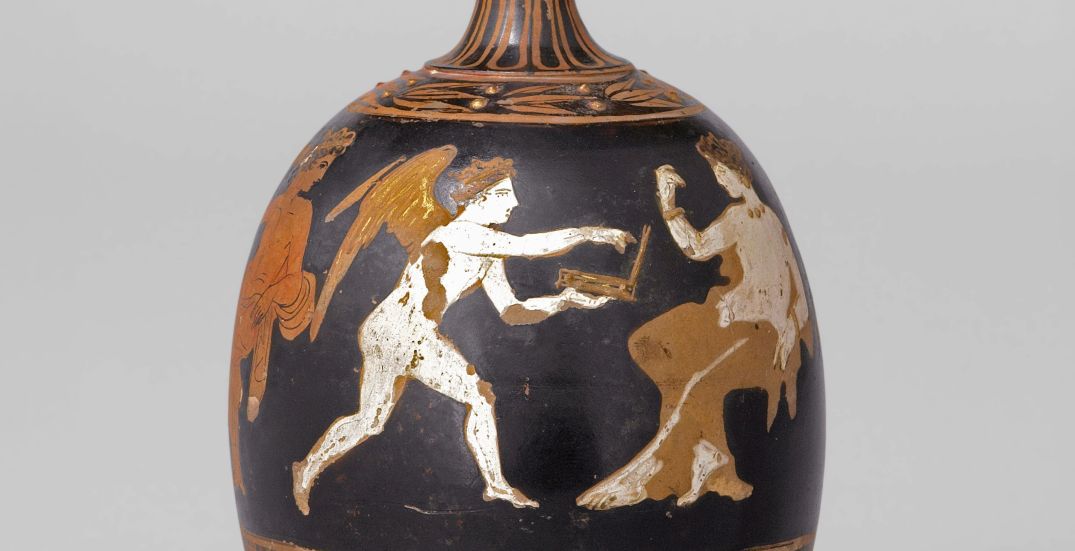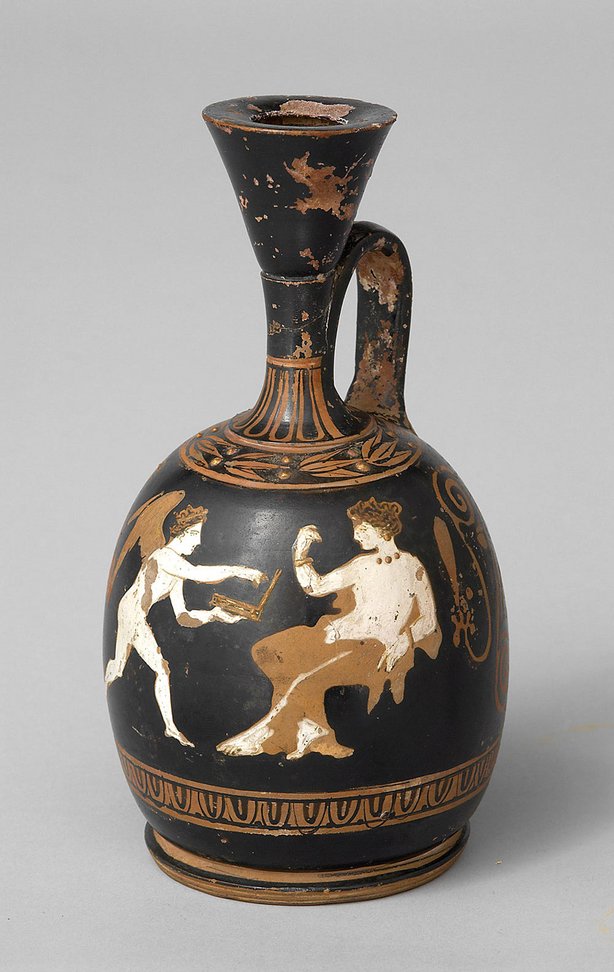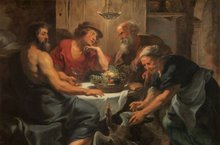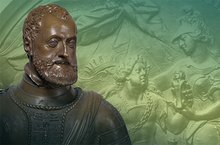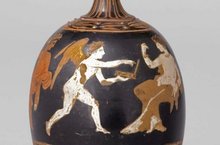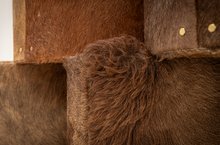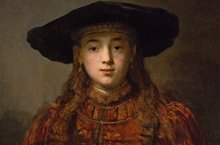Vitrine EXTRA #4
Uncovered!
The Professor and the Art Market
16 February 2024 to 22 September 2024
Tickets
The special presentation Vitrine EXTRA, which presents at regular intervals different ancient artefacts temporarily in the permanent exhibition of the Collection of Greek and Roman Antiquities at the Kunsthistorisches Museum in Vienna, takes visitors back to the year 1875, on the trail of university professor Athanasios Rousopoulos (1823-1898). Find out more about the artefacts he acquired and his importance as a scholar, collector and art dealer.
In 1875 five objects were purchased from Athens for the Vienna Antiquities Collection. The history of their acquisition informs us about their former owner: Athanasios Rousopoulos (1823–1898), a colourful figure of his time in the field of archaeology. As a successful scholar in what was then the Kingdom of Greece, he was a networker in archaeological circles and a specialist for ancient art monuments; as an art dealer and owner of an extensive private collection of antiquities in Athens, he was in constant contact with collectors and museums throughout Europe.
![Athanasios Rousopoulos, Athens, to Eduard von Sacken, Vienna, 9/21 November 1875, Antikensammlung, Akten des Münz- und Antikenkabinetts, ad Nr. 2698 [1] ex 1875.](/fileadmin/_processed_/csm_KHM_AS_Akten_MA_ad2698-1_ex1875_1_Objektbild-1000x1583_13047d2ece.jpg)
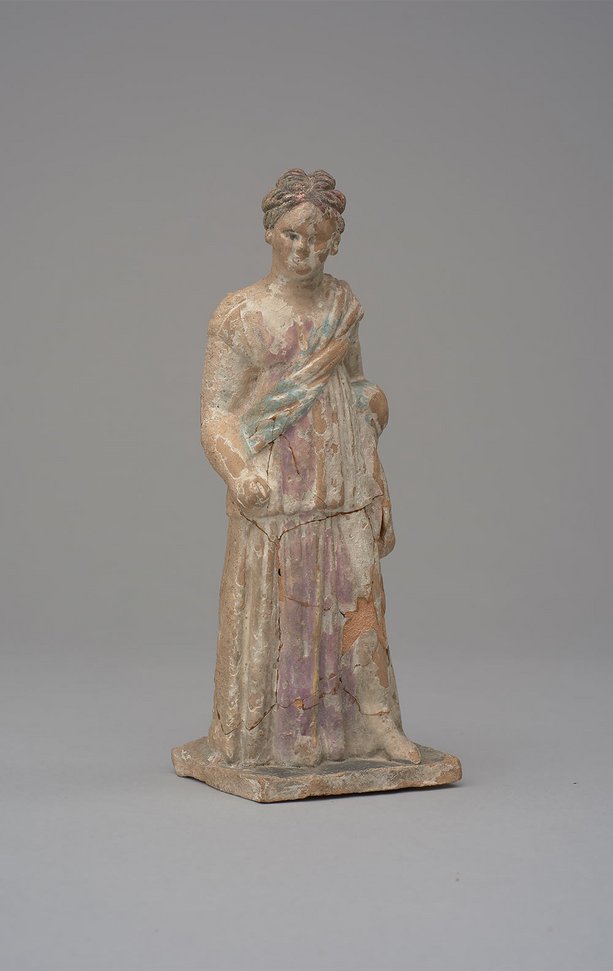
The objects from the possession of Rousopoulos were purchased in 1875 by the Antiquities Collection after Otto Benndorf, at that time Professor in Prague and later Full Professor in Vienna, had seen them in Rousopoulos’ collection and described them: three red-figure vases (lekythoi) and two terracotta statuettes with coloured painting, which at that time were called ‘Tanagra figurines’. The precise circumstances are documented in an exchange of letters between the Director of the Antiquities Collection and Rousopoulos. Their correspondence is presented in the audio station of the exhibition [in German language]:
'As I have written in my letter […], the three vases have been shipped. Since there was still room in the box, I added two small Tanagra figurines.'
At that time Rousopoulos was extremely well-connected and at the peak of his archaeological career in Athens. A few years later, however, the Greek antiquities authorities intervened against his art dealings, since Rousopoulos often acted according to his personal interests instead of in the interests of the authorities. Until the end of his life, he nevertheless remained in active contact with archaeologists and museums, and between scholarship and the art market he was a ‘broker in knowledge’ and an ‘art connoisseur’.
Vitrine Extra #4 draws from the research project Neu-Griechische Antike: eine Objektvernetzung zwischen dem Archäologen Athanasios Rousopoulos und dem Kunsthistorischen Museum Wien [Modern–Greek Antiquity: Object Connections between the Archaeologist Athanasios Rousopoulos and the Kunsthistorisches Museum Wien], a project of the Austrian Archaeological Institute at the Austrian Academy of Sciences (Heritage Science).
Finding out the history of ancient objects from their discovery until today is the central objective in provenance research of historical art collections that possess archaeological monuments. Who was involved, and where and when, which circumstances led to the acquisition, and who decided which object should be purchased and why? Which stages of an object’s history can subsequently be displayed in the museum, and which still need to be discovered and made public? In this way, in addition to the art historical value and the significance of an ancient object for the people in antiquity, cultural-historical aspects for the individuals involved in the modern period also come to the fore.
The project, developed as part of a research focus at the Department of Byzantine and Modern Greek Studies of the University of Vienna, is devoted to these questions, shedding light on the relations between archaeological activities, the collecting of antiquities, and the administration of museums in the 19th century.
Visitors information
More Information:
For additional details regarding your visit to the Kunsthistorisches Museum Vienna, please see our visitors information.
Further Questions?
In the FAQs you will find answers to frequently asked questions.
Information
16 February 2024
to 22 September 2024
Kunsthistorisches Museum Wien
Maria-Theresien-Platz, 1010 Wien
Opening hours
Tue – Sun, 10 a.m. – 6 p.m.
Thursday, 10 a.m. – 9 p.m.
Monday closed
Tickets
The presentation is included in the museum admission.
Our tip:
Experience an extensive programme in the seven museums and collections of the KHM Museum Association with the Annual Ticket.
With the kind support of
Discover our other exhibitions
Point of View #28
Jupiter and Mercury with Philemon and Baucis
2 February 2024 until 12 January 2025
Picture Gallery
Imperial Impressions
The Emperors and their Court Artists
Extended until 26 October 2025
Kunsthistorisches Museum Wien
Vitrine EXTRA #4
Uncovered!
16 February 2024 until 22 September 2024
Collection of Greek and Roman Antiquities
Rembrandt – Hoogstraten
Color and Illusion
8 October 2024 until 12 January 2025
Kunsthistorisches Museum Wien




